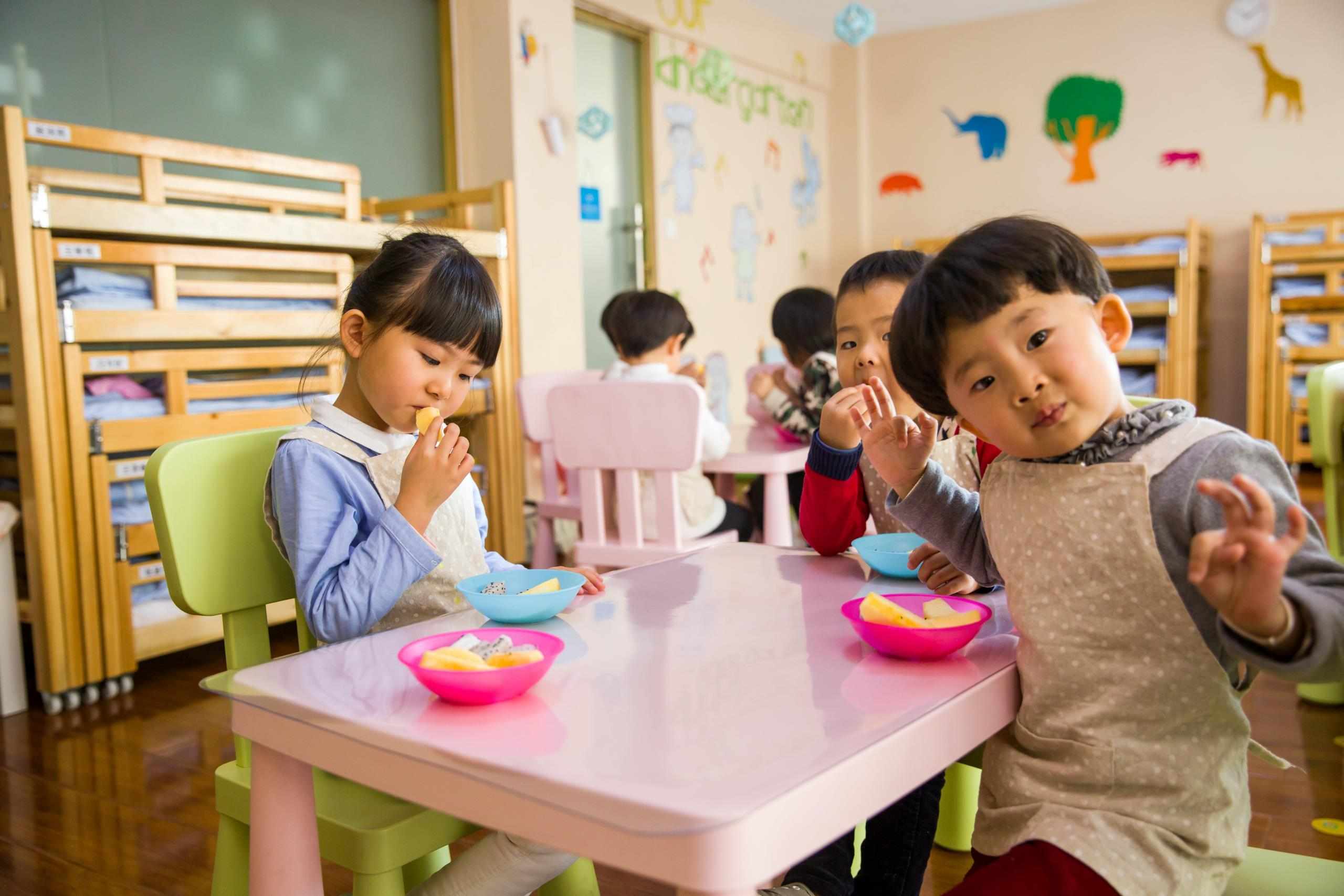Public secondary education in Malaysia is provided by National Secondary Schools (Sekolah Menengah Kebangsaan, SMK). National Secondary Schools use Malay as the main medium of instruction because Malay language is the National language of Malaysia while English is a compulsory subject in all schools. Since 2003, Science and Mathematics had been taught in English, however in 2009 the government decided to revert to use Malay starting in year 2012.[24]
As in primary schools, a National Secondary School must provide teaching of Chinese and Tamil languages, as well as indigenous languages wherever practical, on request of parents of at least 15 pupils in the school. In addition, foreign languages such as Arabic or Japanese may be taught at certain schools.
Secondary education lasts for five years, referred to as Form (Tingkatan) 1 to 5. Form 1 to Form 3 are known as Lower Secondary (Menengah Rendah), while Form 4 and 5 are known as Upper Secondary (Menengah Atas). Most students who had completed primary education are admitted to Form 1. Students from national-type primary schools have the additional requirement to obtain a minimum D grade for the Malay subjects in UPSR, failing which they will have to attend a year-long transition class, commonly called “Remove” (Kelas/Tingkatan Peralihan), before proceeding to Form 1. As in primary schools, students are promoted to the next year regardless of their academic performance.
Co-curricular activities are compulsory at the secondary level, where all students must participate in at least 2 activities for most states, and 3 activities for the Sarawak region. There are many co-curricular activities offered at the secondary level, varying at each school and each student is judged based in these areas. Competitions and performances are regularly organised. Co-curricular activities are often categorised under the following: Uniformed Groups, Performing Arts, Clubs & Societies, Sports & Games. Student may also participate in more than 2 co-curricular activities.
At the end of Form 3, the Pentaksiran Tingkatan 3 (PT3) or Form Three Assessment is taken by students. Based on PT3 results and choice, they will be given three streams to choose from, (1)Academic Stream (Science/Art), Technical and Vocational Stream, and Religious Stream. The Academic stream is generally more desirable. Students are allowed to shift to the Arts stream from the Science stream, but rarely vice versa. In 2013, the government announced to replace Lower Certificate of Education (LCE) evaluation system or “Penilaian Menengah Rendah” with another assessment system which is the Form 3 Assessment or Pentaksiran Tingkatan 3 (PT3).
At the end of Form 5, students are required to take the Sijil Pelajaran Malaysia (SPM) or Malaysian Certificate of Education examination, before graduating from secondary school. The SPM was based on the old British School Certificate examination before it became General Certificate of Education O Levels examination, which became the GCSE (General Certificate of Secondary Education). As of 2006, students are given a GCE ‘O’ Level grade for their English paper in addition to the normal English SPM paper. (Previously, this was reported on result slips as a separate result labelled 1119, which meant students received two grades for their English papers.) This separate grade is given based on the marks of the essay-writing component of the English paper. The essay section of the English paper is remarked under the supervision of officials from the British O Levels examination. Although not part of their final certificates, the O Level grade is included on their results slip.
Shortly after the release of the 2005 SPM results in March 2006, the Education Ministry announced it was considering reforming the SPM system due to what was perceived as over-emphasis on As. Local educators appeared responsive to the suggestion, with one professor at the University of Malaya deploring university students who could not write letters, debate, or understand footnoting. He complained that “They don’t understand what I am saying. I cannot communicate with them.” He claimed that “Before 1957 (the year of independence), school heroes were not those with 8As or 9As, they were the great debaters, those good in drama, in sport, and those leading the Scouts and Girl Guides.” A former Education Director-General, Murad Mohd Noor, agreed, saying that “The rat race now begins at Standard 6 with the UPSR, with the competition resulting in parents forcing their children to attend private tuition.” He also expressed dismay at the prevalence of students taking 15 or 16 subjects for the SPM, calling it “unnecessary”.
A subset of the public secondary schools are known as National-type Secondary Schools (Sekolah Menengah Jenis Kebangsaan, SMJK). At Malayan Independence (1957), it was decided that secondary education would be provided in Malay-medium National Secondary Schools and English-medium National-type Secondary Schools. Fee paying, English-medium schools owned and administered by missionaries/religious bodies were offered government aid provided that they adopted the national curriculum. Secondary schools using other languages as medium of instruction, most of them Chinese schools, were offered government aid on the condition that they convert into English-medium schools. In the 1970s, as the government began to abolish English-medium education in public schools, all National-type Secondary School were gradually converted into Malay-medium schools. The term “National-type Secondary School” is not present in the Education Act of 1996, which blurred the distinction between SMK and SMJK. However, Chinese educational groups are unwelcoming of the new development and continue to push for the distinction to be made between the 78 formerly Chinese-medium schools and other secondary schools. The schools continue to have “SMJK” on the school signboards and boards of directors continue to manage the school properties, as opposed to schools that are directly managed by the government. Most former Chinese-medium SMJK continue to have a majority Chinese student and teacher population, usually only accept students from Chinese-medium primary schools, have Chinese language as a compulsory subject and have bilingual (Malay and Chinese) school announcements.
Other types of government or government-aided secondary schools include Religious Secondary School (Sekolah Menengah Agama), Technical Schools (Sekolah Menengah Teknik), Fully Residential Schools and MARA Junior Science College (Maktab Rendah Sains MARA).
Within the national public school system are a few magnet type/charter public high schools. Admissions are very selective, reserved for students who demonstrate outstanding academic achievement and potential at the elementary level, Year/Standard 1 through 6. These schools are either full-time day or boarding schools (‘asrama penuh’). Examples of these schools are Sekolah Tuanku Abdul Rahman, Royal Military College (Malaysia) and Penang Free School.
Residential schools or Sekolah Berasrama Penuh are also known as Science Schools. These schools used to cater mainly for Malay elites but have since expanded as schools for nurturing Malays who are outstanding academically or those displaying talents in sports and leadership. The schools are modelled after British Boarding School.









